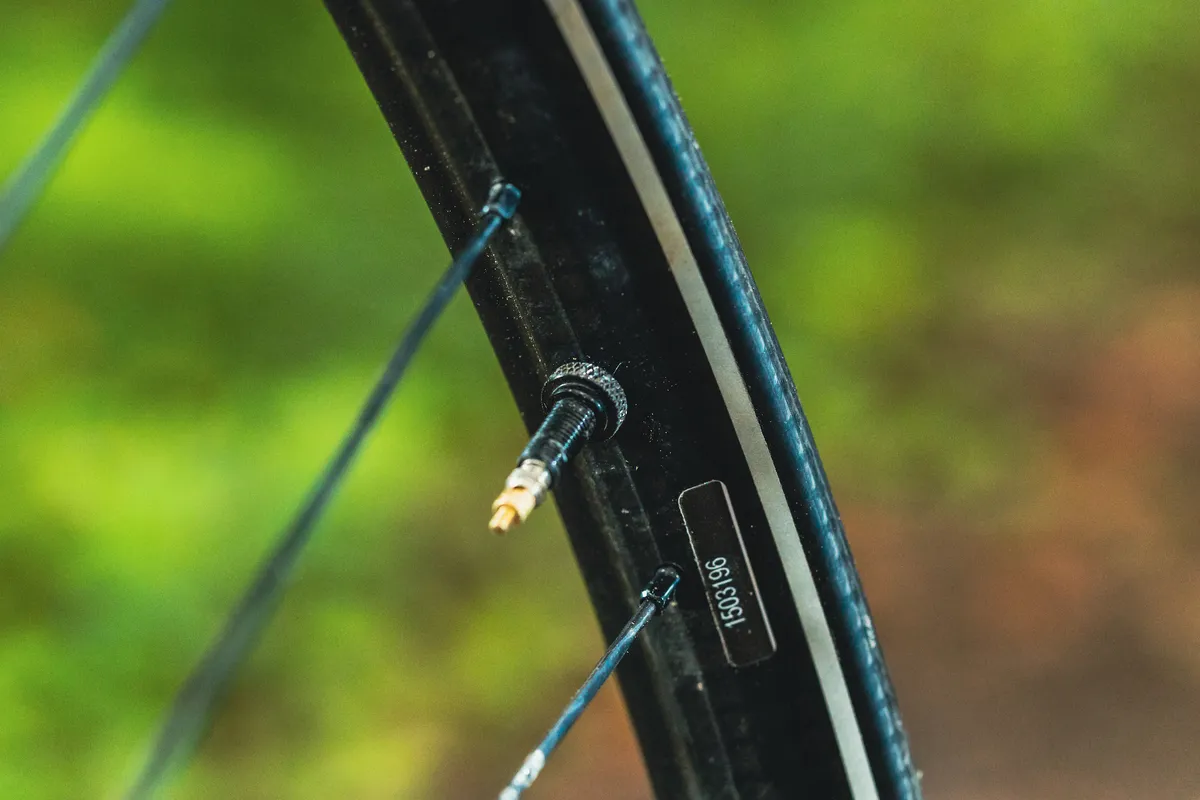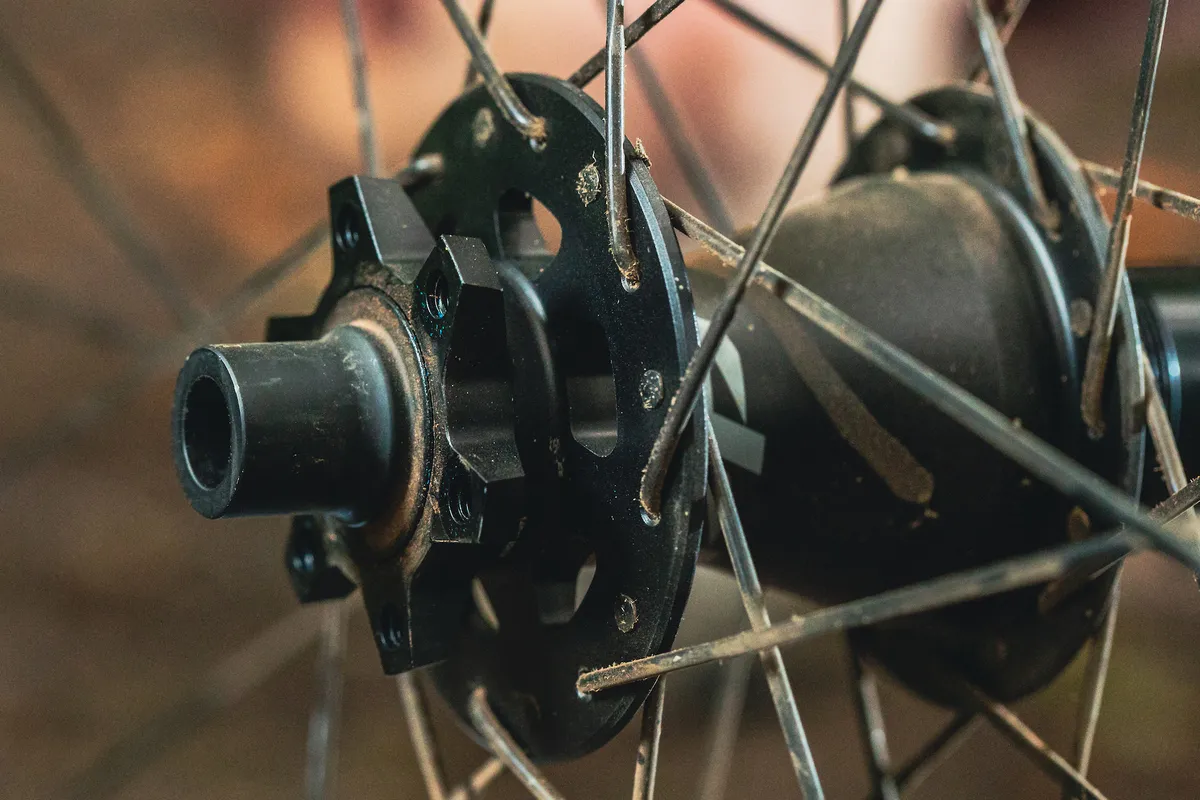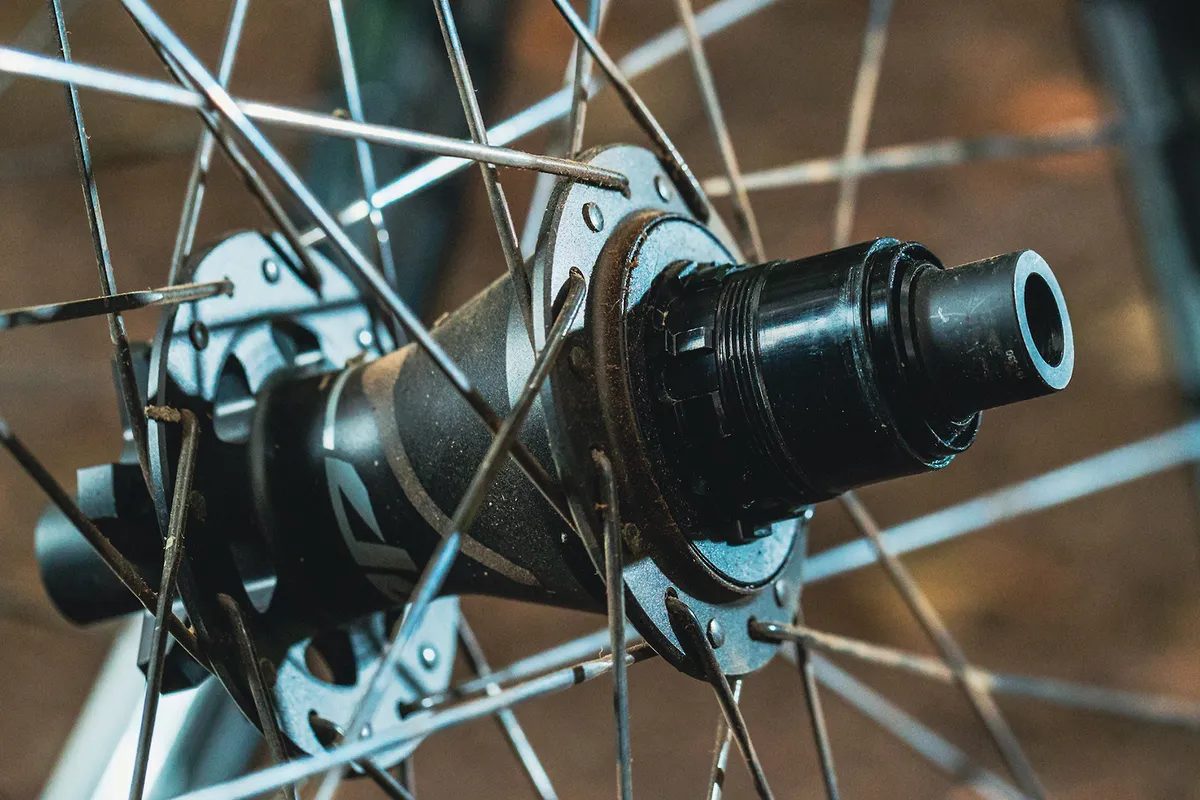Zipp’s 3ZERO MOTO carbon wheels are some of the most interesting around.
Their single-wall rim (it doesn’t have a hollow mid-section, like many other rims) is designed to pivot laterally around the spoke bed.
This, Zipp says, gives improved traction, impact protection and comfort. The theory sounds interesting, but how did they fare in testing?
Zipp 3ZERO MOTO specifications and details
Zipp supplies wheels with either an XD driver, for SRAM 10-50 or 10-52 cassettes, or a Shimano/SRAM HG freehub for 11-50t 10/11/12-speed cassettes.
No Shimano Micro Spline option is offered. Likewise, the hubs have a six-bolt rotor attachment only, though wheels come in both 29in and 27.5in models.
The single-wall rim has a classy woven carbon finish, backed up by shiny decals (of which there are five colour options) that, despite the rim’s shallow 15mm overall depth, draw the eye.

The rim’s outer diameter is a touch larger than some other wheels and, with a relatively shallow central well, getting tyres on and off was a bit of a struggle, especially with tighter DH-spec rubber.
I resorted to tyre levers most of the time and, thanks to that shallow rim depth, hooking the lever over the edge of the rim wall was easy. Still, these aren’t the easiest wheels to get tyres on in my experience.
When it came to inflating tyres, again, there are easier out there. I needed a booster pump most of the time, despite a relatively tight fit.
The rims come pre-taped and with SRAM’s own valve. The wheels are ready to accept the Quark TyreWiz, if you want real-time data on your tyre pressures.
The quality of the taping is good and as it’s a single-wall rim, the spoke nipples’ position is marked by humps in the rim tape. I found I needed the valve’s lockring to be pretty tight in order to keep them airtight.
Each wheel has 32 bladed, J-bend spokes, and because the hub flanges have different diameters a total of five different spoke lengths are used to construct the wheel.

SRAM hasn’t just considered the rims here – this latest version of its hub is one of the nicest on test.
The hub end caps fit snugly thanks to a rubber 0-ring that keeps them stable when you’re fitting and removing the wheel, but also allows them to be easily removed if you need access to the well-sealed and clearly well-greased bearings.
I also liked the slightly chamfered edges of the hub axles, which make the wheels that little bit easier to fit, too.
Zipp 3ZERO MOTO performance
Of all the wheels I had on test, the Zipps were one of just a few sets where I felt there was a noticeable (if still very slight) uplift in performance.
Over an off-camber rooty test track, I was confident holding slightly higher speeds, with what felt like a touch more control over my line choice.
Likewise, on awkward landings, there’s a slightly deadened, damped feel rather than a harsher clunk, when riding my hardtail test bike.
This contributed to minimal hand pain while riding the roughest test tracks.
During testing, I had no issues with either rim reliability or damaging tyres when I bottomed them out over rocks.

With a 120kg system weight limit, heavier e-MTB riders may want to take care, and though the feeling of the wheels is great I’d still avoid running tyre pressures too low, despite a lifetime warranty.
This all suggests that Zipp’s theory of ‘ankle compliance’, as it calls the pivoting rim, may well hold some sway.
The 2.7-degree engagement angle from the 132 points of engagement the freehub body supplies is among the quickest around.
I loved the feel on my hardtail, where pickup of pedal inputs is exceptional. Some may argue that on a full-suspension bike with relatively high pedal-kickback levels, this may become more noticeable.
Zipp 3ZERO MOTO bottom line
These are the best-riding carbon wheels in this test, with a muted, comfortable yet accurate feel on the trail.
They’re not the easiest to get tyres on and off, but we can overlook that thanks to their excellent ride feel.
They’re also significantly cheaper than some other carbon wheels here.
How we tested
Wheels are a pretty pricey upgrade, so we put 12 trail/enduro sets to the test to find out if there’s an inherent benefit to pricey carbon fibre hoops or is alloy better for hard-hitting rims?
The wheelsets were taken on back-to-back runs down selected tracks in the Welsh woods and at BikePark Wales. They were pummelled over and into rocks and drops, turns and berms, and off-camber roots.
To keep things fair, all our testing was done on the same bikes, both hardtail and full-sus, with the same tyres (thanks Specialized!) at the same pressures.
We tested 29in wheels, but most are offered in 650b versions too. While we predominantly ran 2.6in rubber, we also slung some 2.3in tyres on, and we varied the pressures between test sessions to see what difference we could feel.
Bikes shouldn’t be a pain to live with, so we took into account the ease with which tyres could be fitted and inflated. Likewise, we considered how easy it was to access bearings and swap freehubs, too.
Also on test
Product
| Brand | zipp |
| Price | 1840.00 EUR,1645.00 GBP,1800.00 USD |
| Weight | 2016.0000, GRAM (29in) - per wheelset |
Features
| br_rimMaterial | carbon |
| br_wheelSize | 29in_700c |
| br_brakeTypeSimple | disc |
| br_spokes | J-Bend |
| br_rimInternalWidth | 29.7mm |
| Features | Weight (f): 934g Weight (r): 1,082g Engagement angle: 2.7 degrees |
| br_spokeCountRear | 32 |
| br_spokeCountFront | 32 |
